Japanese Professor Masaaki Shimizu has been presented with the 2017 Balaban Award by the US-based Vietnamese Nom (ancient Vietnamese script) Preservation Foundation (VNPF) for his contributions to preserving Vietnamese ancient script.
Professor Shimizu Masaaki, a native of Japan, is known as the author of many articles and studies of Nom script and Vietnamese culture. Professor Shimizu said in 1985 when he was a student at Osaka University, he visited the office of Professor Tomita Kenji and read and understood a Nom study by Vietnamese Professor Dao Duy Anh because he was taught the structure of Han script at his primary school. He then became interested in the ancient script. However, it wasn’t until he was taught phonetics and Chinese Nom script by late Professor Nguyen Tai Can during his studies in Vietnam between 1990 and 1991, that he became passionate about it.
Returning to Japan, he successfully defended his MA thesis on “Ancient Vietnamese-Chinese Script in the Alexsandre de Rhoses Dictionary”. Then, he continued doing his PhD research on Han (Chinese script) at Kyoto University.
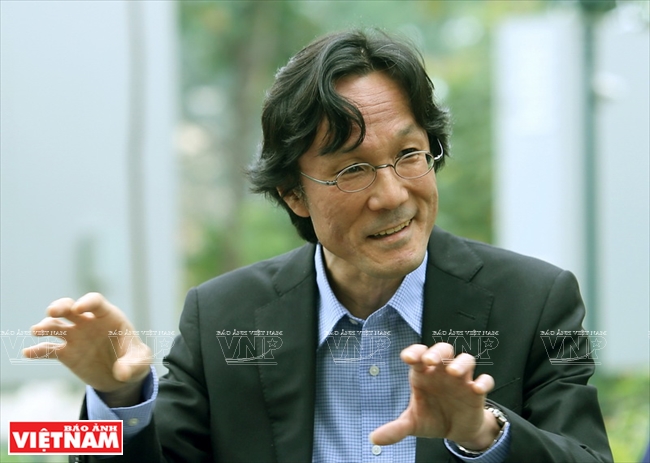
Prof. Shimizu Masaaki (March 2017).
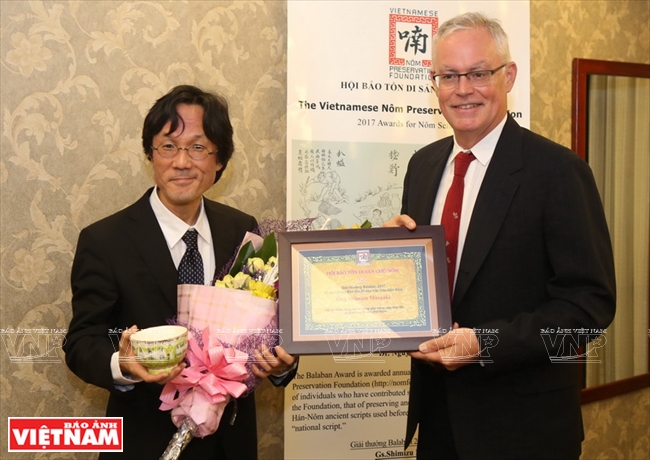 Masaaki Shimizu is presented with the 2017 Balaban Award by the US-based Vietnamese Nom Masaaki Shimizu is presented with the 2017 Balaban Award by the US-based Vietnamese Nom
(ancient Vietnamese script) Preservation Foundation (VNPF).
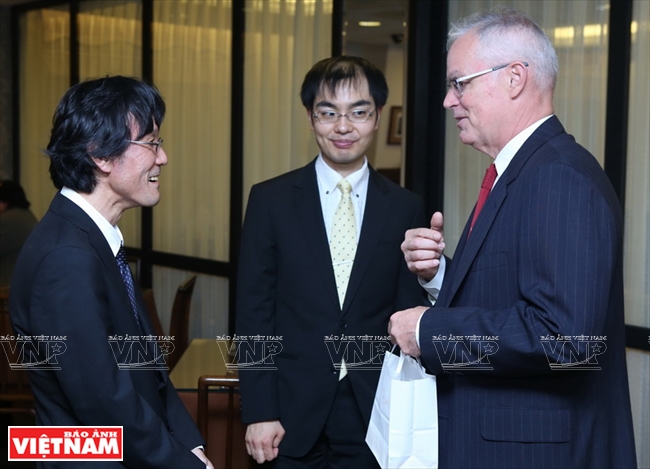
VNPF President Lee Collins (right) talks with Prof. Shimizu Masaaki about Nom during his visit to Vietnam.
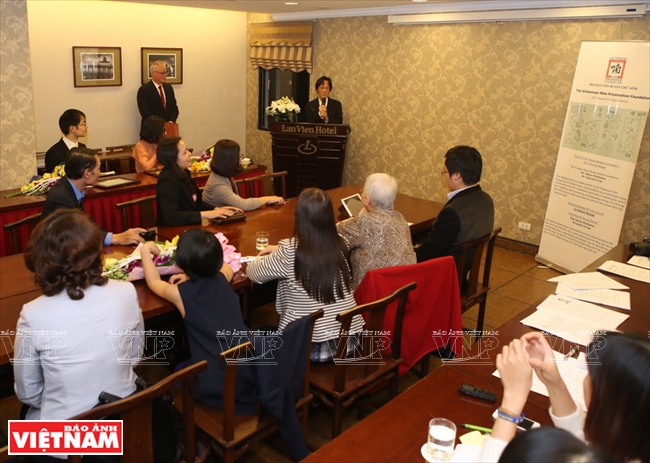
Prof. Shimizu Masaaki addresses the award ceremony. |
After many years of studying the ancient script, the professor collected some woodblock printings which explain the meaning of ancient Nom scripts and carried out extensive studies on Nom script. Here are a few of his titles; “A Phonological Reconstruction of 15th Century Vietnamese Using Chu Nom Materials”, “Some issues of Vietnamese-Chinese sounds in the national language document in the 17th century” and “some reproductions of phonetics of Vietnamese people using Nom script”.
He also did research on Nom script using the language of the Tay ethnic people in Vietnam. During a trip to Cao Bang he met an old woman, 80 years old, who could write Tay Nom script. Because he was so curious about the ethnic Nom script, he spent much time reading funeral orations in the Tay Nom script.
Besides learning the Tay language, he has attended many international workshops on Tay Nom script. These included, “The role of Vietnamese Nom in the development of Tay Nom”; “The history of initial consonant clusters in the Cao Bang dialect of Tay through the analysis of Tay Nom scripts”; and “The process of development of Tay Nom scripts from the point of view of the language between the two ethic groups of Viet and Tay”.
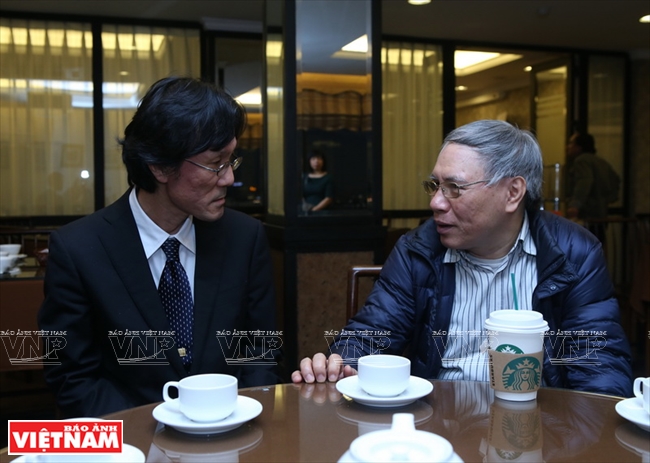
Prof. Shimizu Masaaki talks with Prof. Tran Tri Doi, a leading expert on historical phonetics
and the history of the Vietnamese language.
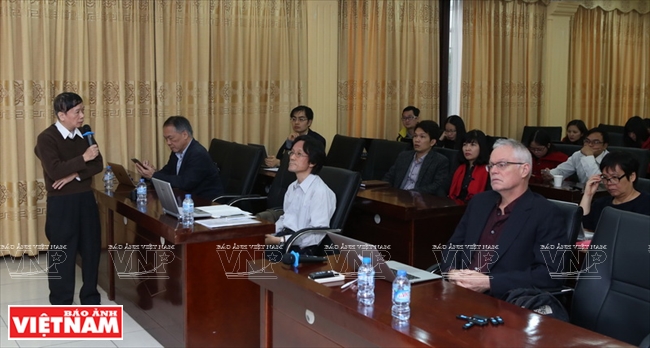
Prof. Shimizu Masaaki attends a talk at the Institute for Han Nom Research.
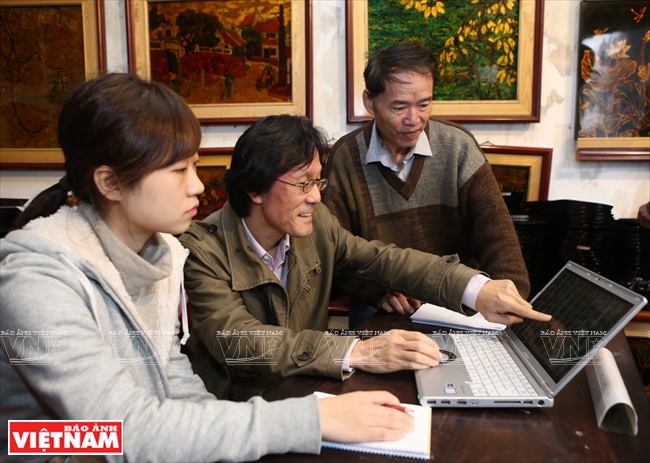
A Japanese student in Vietnam talk with Prof. Shimizu Masaaki about Nom.
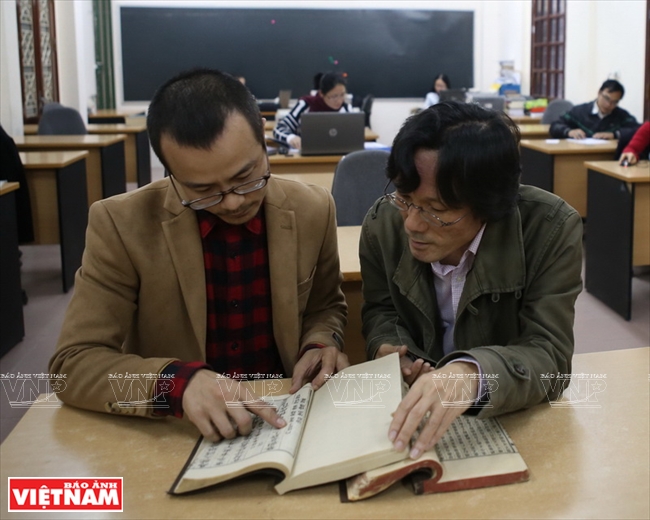
Prof. Shimizu Masaaki works at the library of the Institute for Han Nom Research.
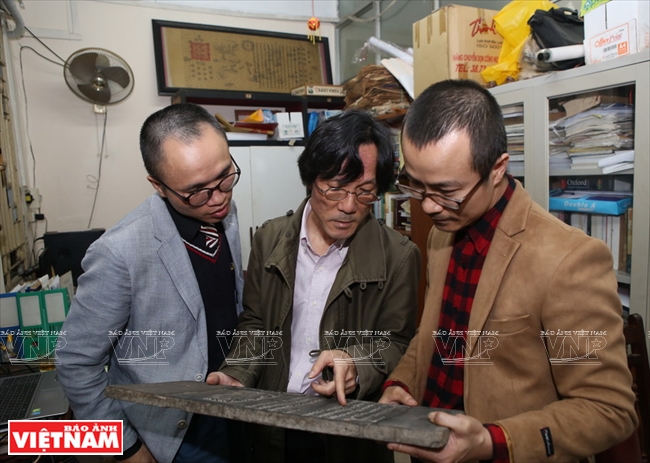
Prof. Shimizu Masaaki pays much attention to woodblocks of ancient Nom scripts.
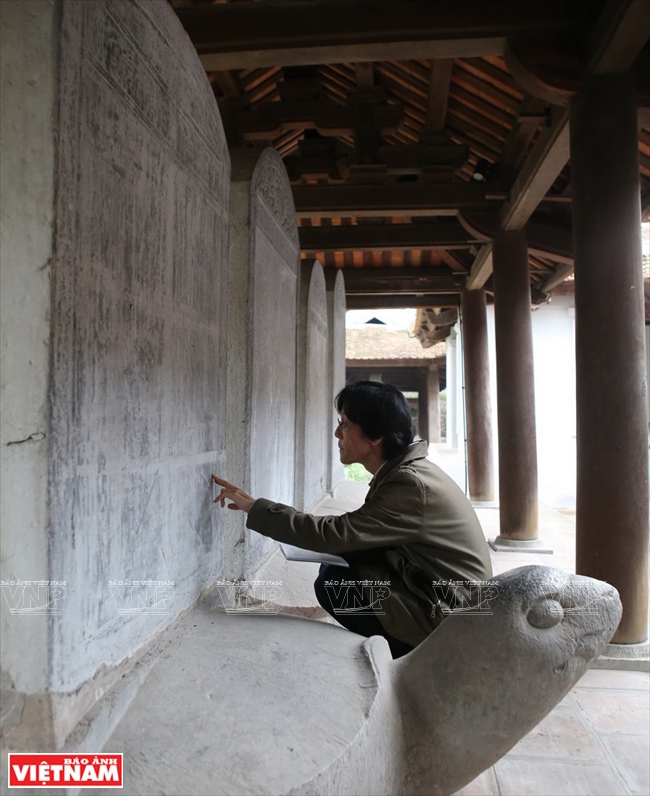
Prof. Shimizu Masaaki studies ancient Nom scripts on the stele at Van Mieu – Quoc Tu Giam.
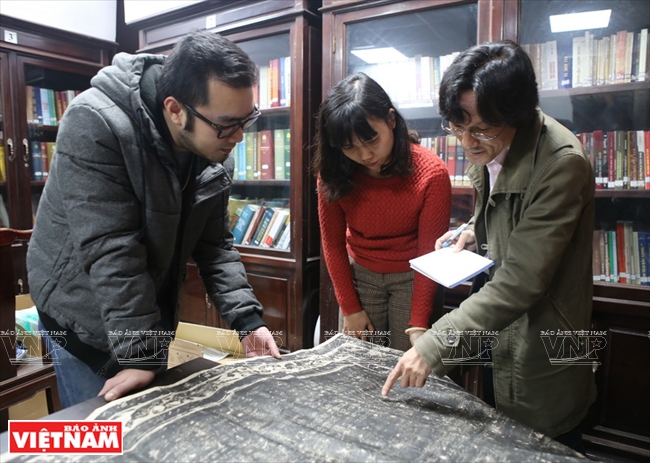
A cadre of Van Mieu – Quoc Tu Giam talks with Prof. Shimizu Masaaki about ancient Nom scripts on stele. |
At present, the professor is teaching Vietnamese to Japanese students at Osaka University. To facilitate the study of his students, he divides the curriculum into three levels. For 1st year students, he teaches them pronunciation for two months and the forms of address through short dialogues. For 2nd year students, the professor uses different sources of daily news and some Vietnamese films to teach them how to listen. He even contacted famous Vietnamese film director Dang Nhat Minh to ask for the use of the latter’s films as teaching aids which have helped his students understand more about the history and culture of Vietnam. To ensure that all students of the last year are able to write their thesis in Vietnamese, he taught using Vietnamese essays with standard grammar structures and advised them to go to Vietnam to participate in programmes to learn about Vietnamese traditional music instruments or do charity in SOS village.
During the talk with us, the Professor also shared his memories of his stay in Vietnam. He said that the person he always thinks about is Prof. Hoang Thi Chau who taught him when he studied in Vietnam in 1990. The professor visited and took care of him when he was sick.
With his love for Vietnam and its Nom script, the Professor said that he would return to Vietnam to continue his research he retires.
Story: Ngan Ha - Photos: Tran Thanh Giang